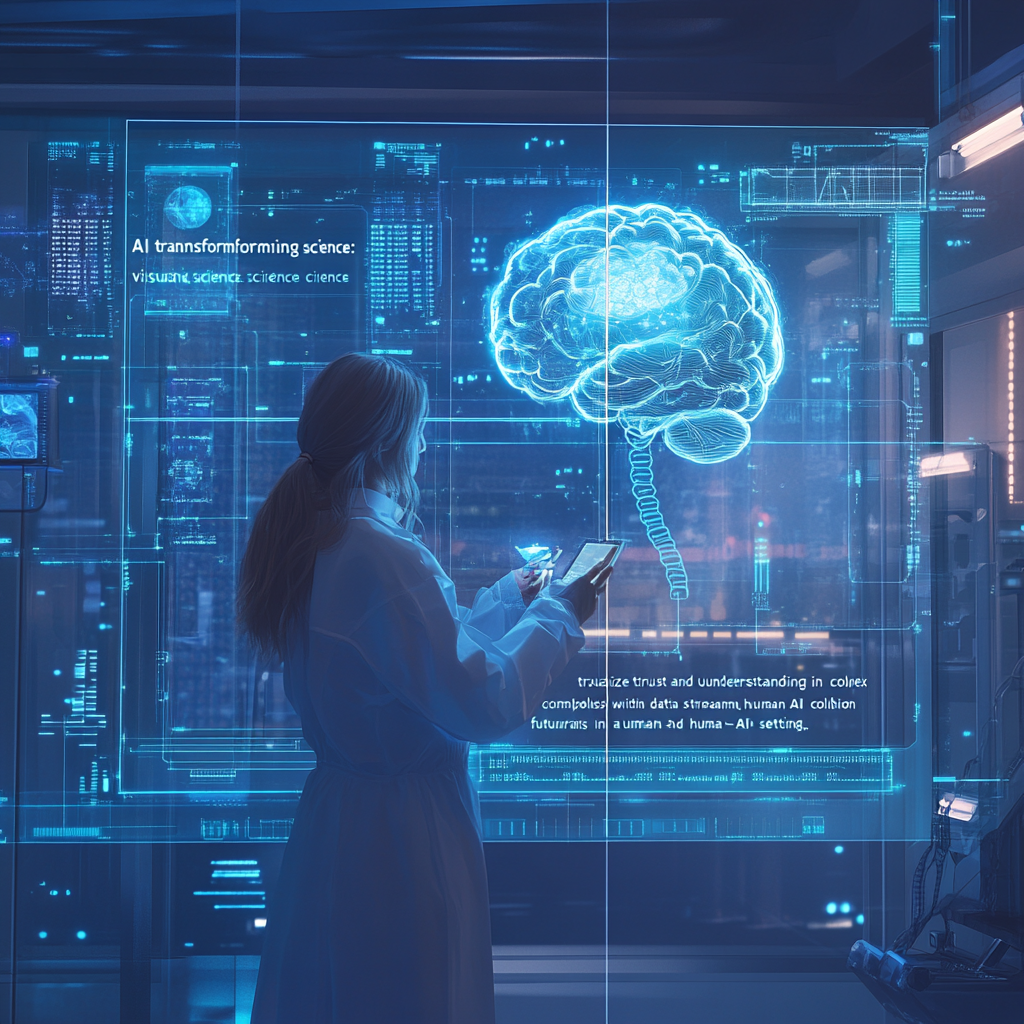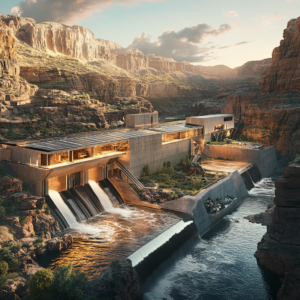
The Great Unknown: Decoding AI’s Impact on Scientific Discovery
Imagine a world where the clang of test tubes collides with the ethereal hum of artificial intelligence. Welcome to the scientific revolution that's knocking on the door—one that promises to turn research on its head, while also throwing a perplexing array of questions into the mix. Buckle up, dear reader! We’re diving into the remarkable yet intricate partnership between AI and science, a relationship that’s reengineering our understanding, and sometimes leaving us scratching our heads.
We all know the scientific method by heart: background research, formulating hypotheses, experimenting, analyzing data, and drawing conclusions. It’s an age-old ritual. Yet, here comes AI strutting onto the scene like a confident dance partner, ready to lead the symphony of discovery in ways that leave traditionalists both in awe and, perhaps, a touch bewildered.
Let’s start at the beginning, where literature reviews and hypothesis formation used to be the labor of academic love. In come AI tools like PaperQA and Elicit—think of them as scholarly speed-daters, rapidly sifting through the endless sea of research articles in search of a match between your burning questions and existing knowledge. By utilizing large language models (LLMs), these tools spit out accurate summaries faster than you can say "peer-reviewed journal." Not only does this save time and increase efficiency, but it unleashes a prestige unmatched in the history of academic aquatics. Moreover, LLMs can gaze into the metaphorical crystal ball of science, predicting the next big discovery and unearthing potential candidates for new drugs—or, let’s face it, your next go-to adventure in academic insight.
When it comes to experimentation and data analysis, artificial intelligence proves itself to be a veritable game-changer, capable of running thousands of experiments in the blink of an eye. Imagine machines equipped with an army of micropipettes churning out samples at blistering speed. What used to take scientists weeks to accomplish can now be executed in a heartbeat. AI can simulate and optimize designs before anybody has even thought to fill a beaker with anything more than hopes and dreams. This turbocharged process isn't just about doing things cheaper or faster; it's about exploration at a scale that was previously fenced off by the limitations of human capability.
You might think AI's capabilities are grounded only within the confines of a lab, but you’d be wrong. Let’s gallop through the landscape of various scientific domains where AI has become the proverbial knight in shining armor. In biology and health sciences, we've seen groundbreaking advancements; AI is predicting protein structures like a seasoned detective piecing together clues to solve complex medical mysteries. Take the dazzling AlphaFold project from DeepMind—it’s like if Sherlock Holmes studied DNA. By meticulously unraveling the folds of proteins, it’s not just a scientific breakthrough; it’s a boon for understanding and treating diseases that have long perplexed humanity.
Shifting gears to physics and environmental science, we bear witness to a similar story of transformation—here, AI dives into the deep end of complex systems modeling. Climate change, that pesky foe, has met its match with machine learning algorithms analyzing hefty datasets to forecast trends and inform conservation efforts. AI now assists scientists in controlling plasma for nuclear fusion—this is no small feat in the quest for clean energy—and at the Large Hadron Collider, it's even categorizing 3D particle showers, a task that could make an entire generation of physicists giddy with excitement.
But before we pop the bubbly and dance like it’s New Year’s Eve, let’s hit the brakes and survey the challenges awaiting us in turn. The realm of AI-infused science is not without its dark corners and specters of concern. Noteworthy among them is the shadow of transparency and accountability. We must ensure that the data fueling these AI models is not tainted with biases; otherwise, we risk repeating the errors of human history, albeit at a turbocharged rate. If approximately 70% of scientists face the replication crisis—stumbling in their attempts to recreate experimental results—we have to safeguard against AI compounding those woes. The solution lies in ensuring that AI-driven experiments are conducted with a crystal-clear approach that emphasizes reproducibility.
Then there’s the burning question of understanding the results. As models become more complex and sophisticated, scientists may find themselves grappling with outputs that resemble smoke and mirrors. The need for interpretability is paramount. If the person behind the curtain lacks insight into the wizardry taking place, we risk diminishing trust in these revolutionary findings. AI systems must evolve to produce clear, comprehensible explanations, allowing scientists to scrutinize and build upon those results with utmost confidence.
As we gaze into the crystal ball, the future of AI in science shows promise, yet it also challenges the very foundation of how we comprehend knowledge itself. Picture this: accelerated discovery, where automation and analysis unify in a gloriously choreographed ballet. Interdisciplinary applications expand like the universe itself—AI is holding hands with biology, physics, and even the social sciences, creating a tapestry of cross-disciplinary innovation. While COVID-19 rocked our world, AI rose to the occasion, addressing global challenges like climate change, sustainable development, and health disparities with a resilience that warrants an inquisitive spirit.
But let’s not forget—we can't build castles in the sky without considering the structure below. Ethical and regulatory frameworks must evolve with this burgeoning technology to preserve the integrity of research as we venture forth. We’re tasked with ensuring that our new machinery of discovery operates on principles of transparency, accountability, and reproducibility. Only time will tell how well we navigate this bridge between human ingenuity and artificial intelligence.
So, as we close the curtain on this exploratory tale of AI’s arrival into the sacred halls of science, remember this: the ink is still wet on how AI will reshape our understanding of the cosmos and our place in it. Our journey through space and time now rides on the back of intelligent machines; we must ensure they carry us wisely.
Want to stay up to date with the latest news on neural networks and automation? Subscribe to our Telegram channel: @channel_neirotoken

